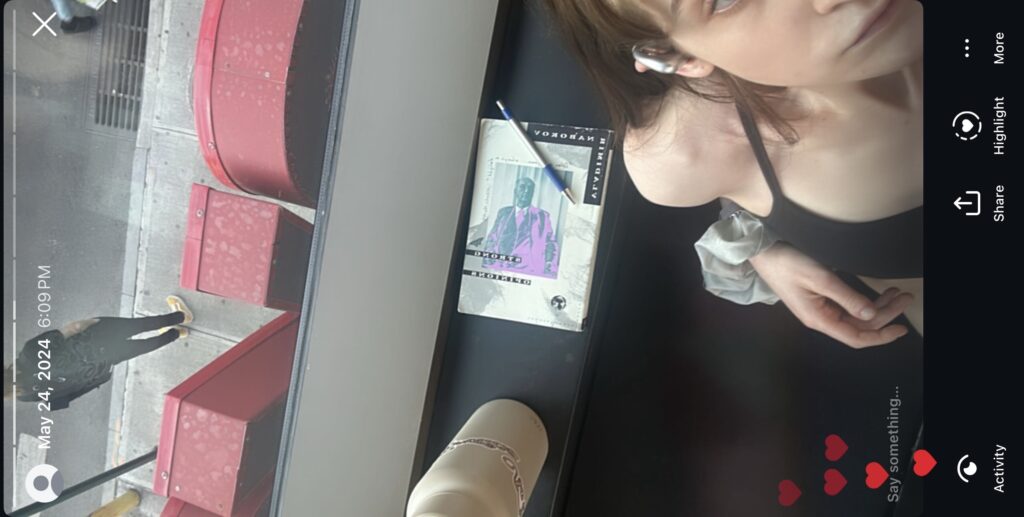Two extremely distant galaxies appear to be Deborah Sullavan Archivesramming into each other over and over again at speeds of over 1 million mph.
The pair — dueling it out 11 billion light-yearsaway in space— has given astronomers their first detailed look at a galaxy merger in which one impales another with intense radiation. The armed galaxy's lance is a quasar, a portmanteau for "quasi-stellar object."
"We hence call this system the 'cosmic joust,'" said Pasquier Noterdaeme, one of the researchers from the Institut d'Astrophysique de Paris, in a statement.
A quasar is a blindingly bright galaxy core — brighter than all of the galaxy's starlight combined, according to NASA. Through telescopes, these sometimes look like a single star in the sky, but they're actually beams of light from a feasting black holeat a galaxy's core. Scientists have suspected quasars may "turn on the lights" when two galaxies crash into each other. But finding direct proof has been challenging.
Not only did the new observations show how a cosmic collision helps a quasar light up, it also revealed that the quasar can be a weapon of mass destruction, snuffing out another galaxy's ability to form new stars. These findings, published in the journal Nature, may help scientists better understand how supermassive black holes can shape the fates of other entire galaxies.
SEE ALSO: Hubble spots a roaming black hole light-years from where it belongs A galaxy's quasar, right, snuffs out another galaxy's ability to form new stars in this artist's rendering. Credit: ESO / M. Kornmesser illustration
A galaxy's quasar, right, snuffs out another galaxy's ability to form new stars in this artist's rendering. Credit: ESO / M. Kornmesser illustration When astronomer Maarten Schmidt found the first quasar in 1963, it looked like a star, though it was much too far away for that to have been the source. Scientists have since learned that quasars are relics of a much earlier time in the universe.
The nearest quasarsto Earth are still several hundred million light-years away, meaning they are observed now as they were hundreds of millions of years ago. That quasars aren't found closer to home is a clue they existed when the universe was much younger. But scientists seek them out for studies because they may provide insight into the evolution of the universe.
Though the research team saw the collision as if it was happening now, it occurred long ago, when the universe was only 18 percent of its current age. That's possible because extremely distant light and other forms of radiation take time to reach our telescopes, meaning astronomers see their targets as they were in the past.
"We hence call this system the 'cosmic joust.'"
To conduct the study, an international team of astronomers used the Atacama Large Millimeter/submillimeter Array, or ALMA, and the European Southern Observatory’s Very Large Telescope, both peering up at the sky from the Chilean desert.
Their research supports a long-held theory: that galaxy mergerscan trigger quasars, and that the energy from them can alter their surroundings in powerful ways.
"Here we see for the first time the effect of a quasar’s radiation directly on the internal structure of the gas in an otherwise regular galaxy," said co-author Sergei Balashev, a researcher at the Ioffe Institute in Russia, in a statement.
The gas that would usually feed star-making activity within the wounded galaxy was transformed: Rather than being dispersed evenly in large loose clouds, the quasar's radiation clumped the gas in super tiny, dense pockets, rendering it useless for star births. This suggests the quasar's energy effectively sterilized the galaxy — at least wherever the radiation hit.
Black holesin general are some of the most inscrutable things in the cosmos. Astronomers believe these invisible giants skulk at the center of virtually all galaxies. Falling into one is an automatic death sentence. Any cosmic stuff that wanders too close reaches a point of no return.
 A wide view of the two galaxies on the verge of merging, dubbed "the cosmis joust," in the distant universe. Credit: DESI Legacy Survey
A wide view of the two galaxies on the verge of merging, dubbed "the cosmis joust," in the distant universe. Credit: DESI Legacy Survey But scientists have observed something weird at the edge of black holes' accretion disks, the rings of rapidly spinning material around the holes: A tiny amount of the material can suddenly get rerouted. When this happens, high-energy particles get flung outward as a pair of jets, blasting in opposite directions, though astronomers haven't quite figured out how it all works. It's also still a mystery as to when exactly in cosmic history the universe started making them.
The quasardidn't just affect the other galaxy. The sparring apparently allowed new reserves of fuel to flow into the galaxy hosting the quasar, bringing fresh gas within reach of the supermassive black hole powering it. As the black hole eats the material, it perpetuates the violence.
"These mergers are thought to bring huge amounts of gas to supermassive black holes residing in galaxy centers," Balashev said.
 MashTalk: Samsung's Galaxy S8 is here, but does it live up to all the hype?
MashTalk: Samsung's Galaxy S8 is here, but does it live up to all the hype?
 The Equinox on Orchard Street by Cara Schacter
The Equinox on Orchard Street by Cara Schacter
 Your political views help determine which science books you buy
Your political views help determine which science books you buy
 Fyre Festival and Trump’s Language
Fyre Festival and Trump’s Language
 'Moana 2' is coming and we're clinging to Disney's tiny reveals
'Moana 2' is coming and we're clinging to Disney's tiny reveals
 'Plus One': Maya Erskine and Jack Quaid's undersung rom
'Plus One': Maya Erskine and Jack Quaid's undersung rom
 She Who Helps See by George Saunders
She Who Helps See by George Saunders
 'Moana 2' is coming and we're clinging to Disney's tiny reveals
'Moana 2' is coming and we're clinging to Disney's tiny reveals
 NYT Connections Sports Edition hints and answers for May 19: Tips to solve Connections #238
NYT Connections Sports Edition hints and answers for May 19: Tips to solve Connections #238
 AI robocalls are officially illegal, FCC declares
AI robocalls are officially illegal, FCC declares
 Wordle today: The answer and hints for February 9
Wordle today: The answer and hints for February 9
 Six Handbags by Simon Wu
Six Handbags by Simon Wu
 Ireland fines TikTok $600 million for sharing user data with China
Ireland fines TikTok $600 million for sharing user data with China
 If Taylor Swift attends Super Bowl 2024, who will she bring?
If Taylor Swift attends Super Bowl 2024, who will she bring?
 Apple seemingly kills web apps and website push alerts for some users in iOS 17.4 beta 2
Apple seemingly kills web apps and website push alerts for some users in iOS 17.4 beta 2
 Elon Musk's SpaceX is betting big on its rocket launch this week
Elon Musk's SpaceX is betting big on its rocket launch this week
 NYT mini crossword answers for May 12, 2025
NYT mini crossword answers for May 12, 2025
 Apple seemingly kills web apps and website push alerts for some users in iOS 17.4 beta 2
Apple seemingly kills web apps and website push alerts for some users in iOS 17.4 beta 2
At the Bazaar by Alexandra PechmanPoem: Episode by Jennifer Michael HechtStaff Picks: Bookshop Door, Thinking Fast and Slow by The Paris ReviewDelivering Chinese; SelfStaff Picks: The Unseen Bestiary, The Avoidance of Love by The Paris ReviewDummy Land by Avi SteinbergThe Secret Bookstore by Thessaly La ForceOn the Shelf by Sadie SteinOur Café au Lait Cup—Now for Sale! by Sadie SteinA Father, A Daughter, A Novel by Jesse BrownerManaged Mayhem by Dawn ChanStaff Picks: Microstyle, The Epiplectic Bicycle by The Paris ReviewTalking Dirty with Our Fall Issue by Sadie SteinThe Maserati Kid by Thomas Beller‘Echo’ in Madison Square Park by Jane and Jonathan WellsTPR v. The New Yorker: Lucky and Good by Cody WiewandtThe Secret Bookstore by Thessaly La ForcePox: On 'Contagion' by Caleb CrainDocument: Ernest Hemingway to Ursula Hemingway by Ernest HemingwayHelen Schulman on 'This Beautiful Life' by Brian Gresko Meta says some AGI systems are too risky to release Best vacuum deal: Save $100 on Dyson V15 at Amazon Researchers created an AI reasoning model on par with OpenAI's o1 for less than $50 Best Beats deal: Get $50 off Studio Buds+ Best Amazon deal: The Echo Glow is on sale for under $25 Best robot vacuum deal: Save $120 on the iRobot Roomba Q0120 NYT Strands hints, answers for February 5 Best charging station deal: Anker Prime 200W 6 Spacecraft finds a positively enormous planet 12 times Jupiter's mass Best Sony earbuds deal: Save $51.99 on Sony WF Sonos' big comeback is a streaming box Best streaming deal: Get 21 days of YouTube TV for free Robot pets are purring their way into the hearts of America's seniors Get the Revlon One Best gifting deal: The Skylight digital frame is 25% off at Amazon Pachuca vs. León 2025 livestream: Watch Liga MX for free Bill threatens to make using DeepSeek a crime for Americans Best streaming deal: Get a year of Peacock Premium for $30 Best Samsung smartphone deal: Galaxy S24 FE for $499.99 (save $150) Best kitchen deal: Save $40 on the Ninja Foodi Smoothie Bowl Maker
1.9897s , 10156.171875 kb
Copyright © 2025 Powered by 【Deborah Sullavan Archives】,Miracle Information Network